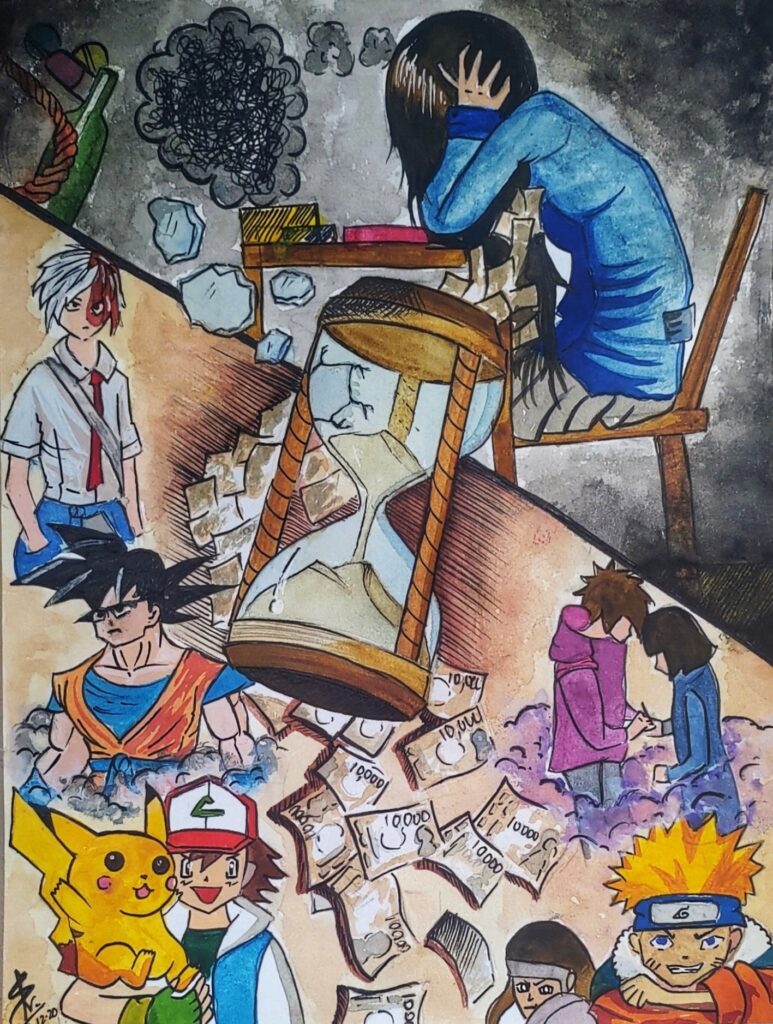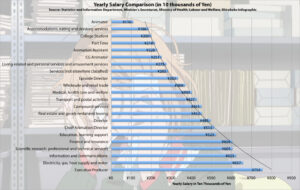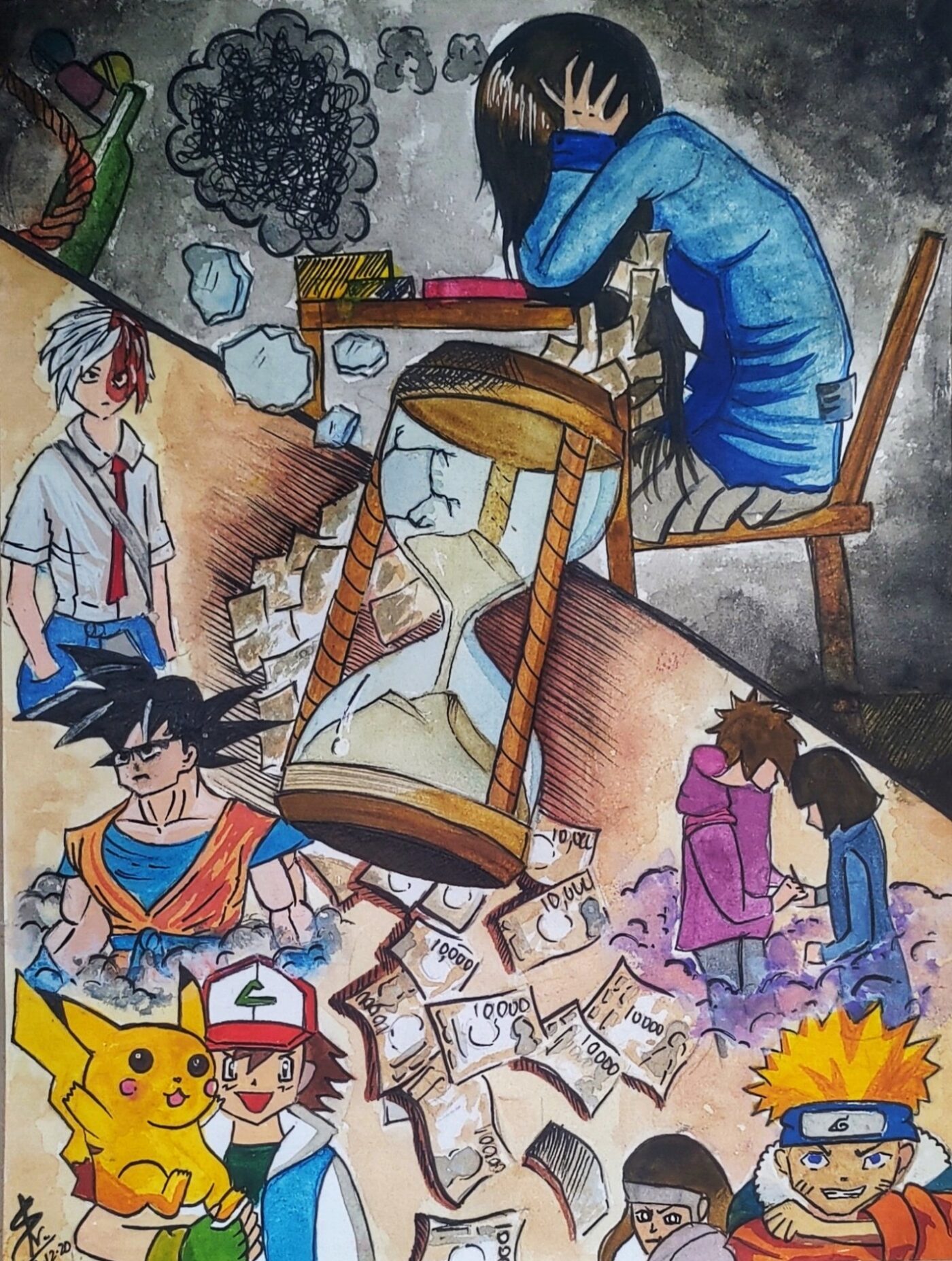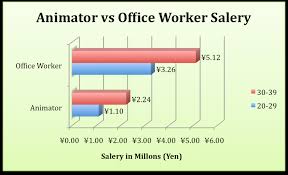
An overly enthusiastic main character who never quits against all odds. A love interest who initially locked horns with our hero but couldn‘t help fall for that undying spirit much like us. Surrounding are a bunch of support characters that we like and dislike in parts. Sounds fun and rosy, right? Well, that’s the Japanese anime and manga industry for you. But wait, there’s one central character left. Yes, the villain. The character that gives our hero purpose and, in essence, life to the whole story. Sadly, it does not translate to real life. The industry is filled with a myriad of industries that seems to suck the life of our beloved heroes, the manga artists, and the animators behind the anime. Why are the lives of these animators so bad? And why do people still choose it as a profession? To understand this better, let’s take a look at how big the Manga and Anime industry is not only in Japan, but worldwide.
The anime industry based in Japan shot into worldwide fame when Pokemon, One Piece, and Sailor Moon were met with a grand reception in the US. Its fame shot up so much that in the span of 15 years between 2002 to 2017, the Japanese animation industry doubled in size to more than $19 billion annually. And with more anime coming to OTT platforms like Netflix and Amazon Prime, the industry is only generating more revenue. It is increasing in popularity worldwide. Fans who used to pirate these shows before now see it as a bonus along with their usual video service subscription. With this growing popularity and increased profits for the production companies, it is effortless to overlook the dire situation that plagues the artists and animators working in the industry. I love anime and manga as much as the next person, but one can no longer be ignorant of the growing movement in recent years to treat these artists fairly. Welcome to the dark side of the Japanese Animation Industry.
Anime is almost exclusively hand-drawn. Shingo Adachi, animator and character designer for Sword Art Online, has said that the lack of talent is a significant concern with nearly 200 animated TV series made in Japan every year— there just aren’t enough professional animators to get around. Therefore the studios depend heavily on a vast pool of basically unpaid freelancers who are genuinely enthusiastic about anime.
At the entry-level position, there are “in-between animators” who are typically freelancers. They are the ones who are making all the specific illustrations after the top-level directors provide only storyboards and the middle-tier “key animators” design the essential frames for each scene.
Animators are usually paid only by commission. Just about 200 yen ($1.84 in U.S. Dollars) per drawing is paid for an ‘In-Between’ Animator, an entry-level role. It typically takes over an hour to make a specific drawing. If you worked a 9-to-5 job as an animator, you might create eight drawings on a successful day.
So all the hard work is going to give you just around a mere $14.72. Most sources suggest they don’t receive any more from higher-up jobs. The companies that offer salaries by the hour pay a little better but a bit better is still not enough when the bar is already set this low. Animators in both these categories make less than Japan’s minimum wage, which is around 874 yen or $8.06. This means that people can earn more working at a kiosk than working as an animator. Just to make ends meet, these animators work on an average of 12-18 hours a day. To add a little more perspective, an average American works up to 200 hours a month, but these animators work for over 400 hours and, in some cases, even 600 hours a month. All this to be paid only 1/3rd of the average American salary.
 If one were to pinpoint precisely where it all started to go wrong, one could attribute it to the success of Astro Boy. Osamu Tezuka, the creator of Astro Boy and often known as the God of Manga, set various precedents in the manga and anime industry. In the early 1960s, when networks did not fancy animated shows, Tezuka and his company were ready to bear the losses just to get Astro Boy on air. They quickly made up for the losses via toys and merchandise. Since this worked out so well for Tezuka and the broadcasters, it became the status quo. But it made it impossible for people following his footsteps to earn a living wage. Usually, women who work on animation from home are exploited and paid even less. There is also an added expectation of quitting after marriage as one has to take care of the household and can’t be working all the time and still earn next to nothing.
If one were to pinpoint precisely where it all started to go wrong, one could attribute it to the success of Astro Boy. Osamu Tezuka, the creator of Astro Boy and often known as the God of Manga, set various precedents in the manga and anime industry. In the early 1960s, when networks did not fancy animated shows, Tezuka and his company were ready to bear the losses just to get Astro Boy on air. They quickly made up for the losses via toys and merchandise. Since this worked out so well for Tezuka and the broadcasters, it became the status quo. But it made it impossible for people following his footsteps to earn a living wage. Usually, women who work on animation from home are exploited and paid even less. There is also an added expectation of quitting after marriage as one has to take care of the household and can’t be working all the time and still earn next to nothing.
There is a long-established precedent by production companies to keep costs low. The parent companies make money from merchandising, but the budget for rank and file animators is separate. What’s hilarious is that these budgets are still based on what Tezuka came up with in the 1960s. Back then, drawings were not that complex, and you could easily do a basic panel sketch in 10 minutes. But with the details in animations these days, you’ll earn barely two bucks an hour. Masashi Kishimoto, the mangaka behind Naruto, was married in 2003 but could never go on his honeymoon until 2015 due to his commitments.
The working conditions are grim too. Animators often end up falling asleep on their desks. There have reports of animators being hospitalised multiple times due to illness brought on about by exhaustion. A popular anime studio was accused of a violation of the labour code recently. Reports suggested that the employees worked for over 400 hours a month and once even went 37 days without a day off. These dire conditions lead to a lot of suicides, which rarely get classified as work-related incidents.
So why is animation and manga artist still a sought after profession in Japan? For starters, one has to realise that for the animators and artists, this is about all they know. Their emphasis is on the piece of artwork and their expertise. Therefore, they remain in that profession because they just feel they wouldn’t excel in other fields. They’ve spent too much time building up their skills, and art is their focus, so they don’t care much about money. The other reason is just the pure passion these animators have for their craft. They are very proud of what they create and want to share it with the whole world.
For these people, who have nothing but a wholehearted love for their craft, it shouldn’t cost them their lives. Sadly, their only options are to die on this job with terrible conditions or quit because their dreams can’t sustain them. It’s truly horrible and is exploitation in the most apparent form. As fans of the medium, we should focus on spreading awareness about the plaguing issues and advocating for better conditions for these artists. Even if it means fewer manga and anime get produced or more gaps between episodes, it would be a fair trade-off so that these talented people can sleep a bit more happily at night. For everything you watch, read, and love, animators pay the price. Yet they draw on.
Written by Praneeth Ratnagiri for MTTN
Featured Image by Suprita for MTTN
Image Sources: Chikorita Anime Blog


Leave a Reply
You must be logged in to post a comment.